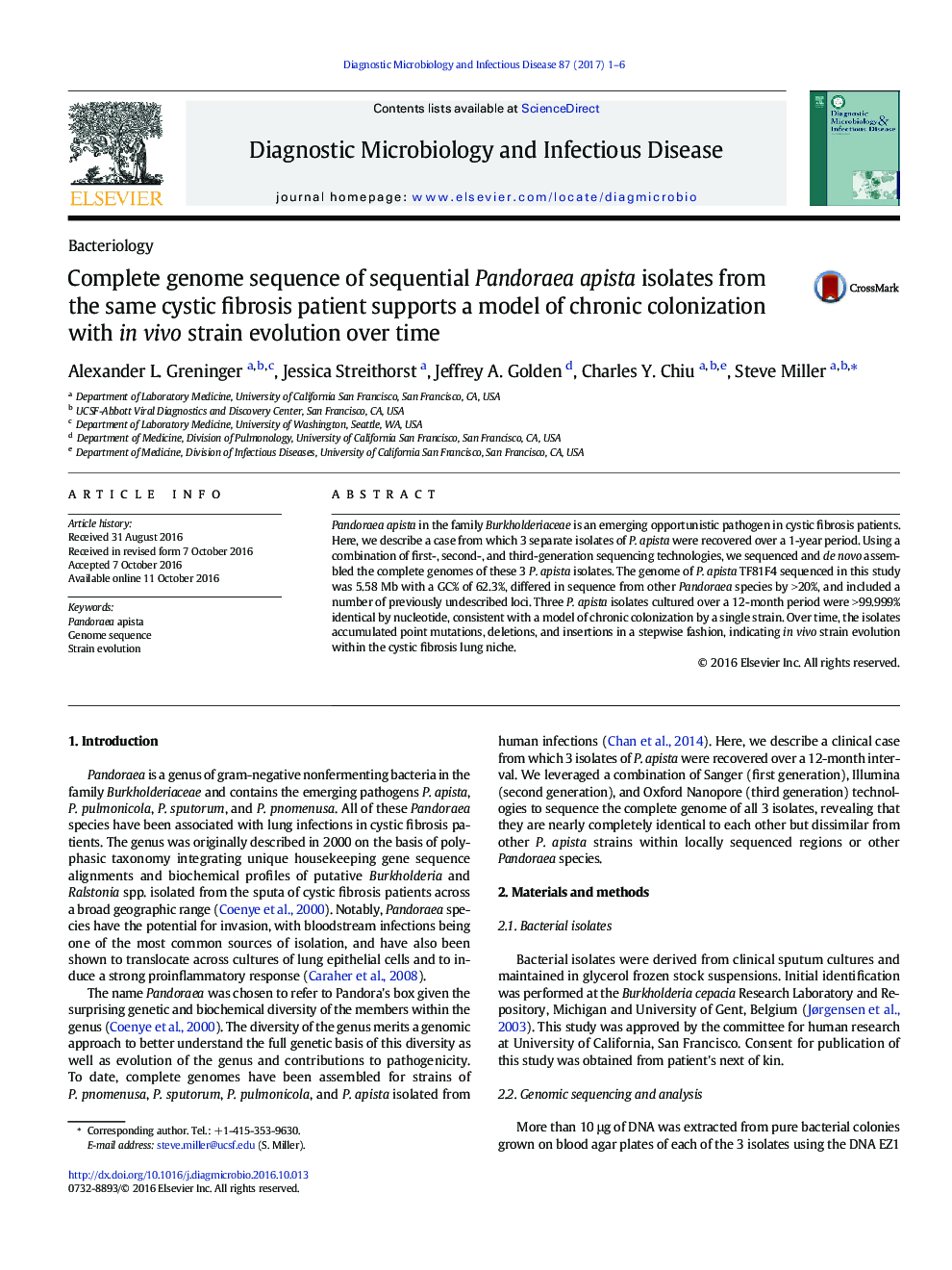| Article ID | Journal | Published Year | Pages | File Type |
|---|---|---|---|---|
| 5665952 | Diagnostic Microbiology and Infectious Disease | 2017 | 6 Pages |
â¢Complete genome sequence was obtained for 3 P. apista isolates.â¢P. apista genomes demonstrate several novel loci.â¢Genome comparison indicates chronic colonization in the cystic fibrosis lung niche.â¢These bacteria accumulate approximately 100 mutations per year in vivo.
Pandoraea apista in the family Burkholderiaceae is an emerging opportunistic pathogen in cystic fibrosis patients. Here, we describe a case from which 3 separate isolates of P. apista were recovered over a 1-year period. Using a combination of first-, second-, and third-generation sequencing technologies, we sequenced and de novo assembled the complete genomes of these 3 P. apista isolates. The genome of P. apista TF81F4 sequenced in this study was 5.58 Mb with a GC% of 62.3%, differed in sequence from other Pandoraea species by >20%, and included a number of previously undescribed loci. Three P. apista isolates cultured over a 12-month period were >99.999% identical by nucleotide, consistent with a model of chronic colonization by a single strain. Over time, the isolates accumulated point mutations, deletions, and insertions in a stepwise fashion, indicating in vivo strain evolution within the cystic fibrosis lung niche.
